The Toyota Avensis is a large family car, available in both saloon and estate car body styles.
It offers drivers the choice of four engines, including 1.8-litre petrol and 2.0 and 2.2-litre diesels. All models are generously equipped. There are four different trim levels to choose between, including Active, Icon, Icon Business Edition and Excel.
Toyota is proud that the Avensis is built in Britain, and with 17 models in the range, believes that there is an Avensis for you. The diesel models are particularly efficient, with the 2.0-litre D-4D diesel model returning 62.8mpg.
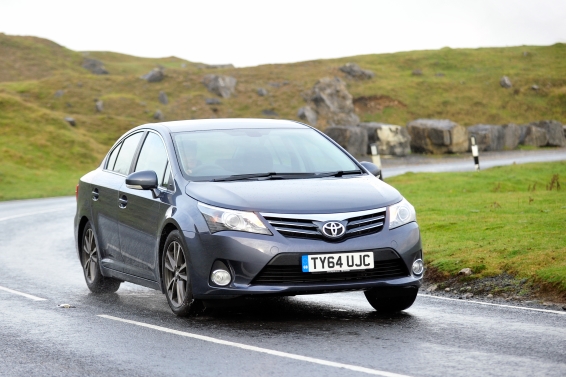
DRIVING
Buyers of the Toyota Avensis saloon can choose from four economical engines, with one petrol and three diesel versions offered. There is also a wide range of transmissions on offer, including a six-speed manual, six-speed automatic and seven-speed stepped CVT. Toyota’s engine technology, called Toyota Optimal Drive, ensures good performance and excellent fuel economy along with low emissions for the environmentally-conscious buyer.
The Toyota Avensis saloon rides and handles superbly for a car of its size. The latest version, launched in 2013, features improvements to the suspension and power steering that deliver better ride comfort and handling responses. On the road, the 2.2-litre D-CAT offers the strongest performance, offering 148bhp and a 0-62mph sprint time of 8.9 seconds.
COMFORT
The inside of the Toyota Avensis saloon is quiet and comfortable, a peaceful environment thanks to excellent sound insulation keeping out unwanted engine and road noise. Four trim levels – Active, Icon, Icon Business Edition and Excel – are all well-equipped, with the latest Toyota Touch 2 with Go multimedia and navigation systems included as standard on Icon and Icon Business Edition models (Touch 2 with Go Plus on Excel models).
Every Toyota Avensis is roomy inside with plenty of head- and legroom and uses high-quality materials that are pleasing to look at and to touch. A boot liner is offered as part of an optional protection pack that also includes rear parking sensors.
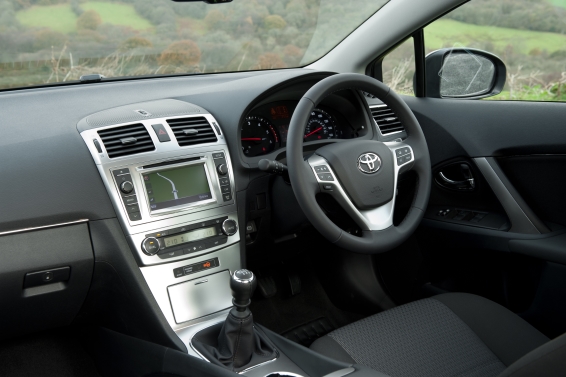
PRACTICALITY
The Toyota Avensis saloon is a large car ideal for family and business use. A large boot opening provides access to 509 litres of boot space, and the rear seat also folds forward to make space for longer items to be transported. The passenger compartment also has extra cubby holes and storage spaces for even more practicality in everyday use.
SAFETY
Both the Toyota Avensis saloon and Toyota Avensis Tourer estate scored the maximum five-star rating in the 2009 Euro NCAP safety crash tests, so you can be assured that its strong body and numerous airbags will protect occupants in the event of an accident. To help avoid that happening, the Toyota Avensis is also fitted with safety aids like anti-lock brakes, steering assist, stability control, traction control and brake assist as standard.
As an option on Excel models, a Pre-Crash Safety System uses radar and cameras to monitor the road for potential collisions and activate avoidance systems. All Toyota Avensis models have follow-me-home headlights that stay illuminated for 30 seconds to light your path home, keeping you safe even after you have left the vehicle.
RUNNING COSTS*
With its sleek, aerodynamic design and efficient petrol and diesel engines, running costs for the Toyota Avensis saloon are kept to a minimum. The low-emission engines mean that road tax rates start from £0 per year for the most popular 2.0 D-4D diesel, and at most will cost £290 each year (2.2 D-CAT 150 diesel).
Impressive fuel economy ranges from 43.5mpg (1.8 Valvematic petrol) to 62.8mpg (2.0 D-4D diesel) on the combined cycle, and as it only needs a service every 10,000 miles or once a year, the Toyota Avensis saloon is affordable to maintain.
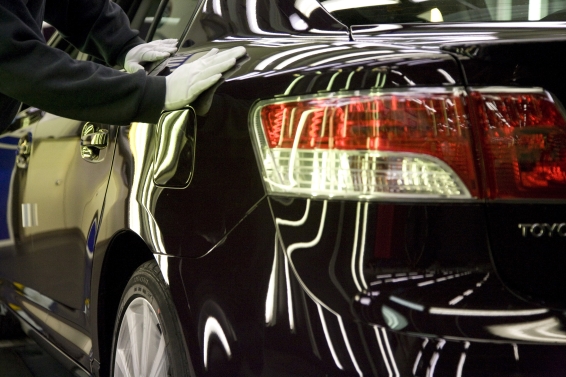
QUALITY
The Toyota Avensis is built in Derbyshire at the same state-of-the-art factory that makes the Toyota Auris and Toyota Auris Touring Sports. A comprehensive five-year/100,000 mile mechanical warranty reflects Toyota’s renowned build quality and reliability. The Toyota Avensis also has three years’ cover against rust and paint defects and a 12-year anti-corrosion warranty for complete peace of mind.
PRICES*
The Toyota Avensis saloon is available in 14 different trim and engine combinations, with prices starting from £17,700. The 1.8 Valvematic petrol engine is available in all trim levels from Active to Icon Business Edition, ranging from £17,700 to £20,500 for the six-speed manual models, or an extra £1050 for the optional Multidrive S automatic transmission. Toyota’s most popular 2.0 D-4D diesel engine is available in all four trim grades, costing between £18,695 and £24,495. The larger 2.2 diesel engines are available in Icon, Icon Business Edition and Excel models, priced at £25,500 with a six-speed manual gearbox (Excel only) or between £23,400 and £26,595 for the six-speed automatic model.
For more information on the Toyota Avensis, please visit the designated section of the Toyota UK website, or to arrange a test drive, leave us a message below and we’ll be in touch!
*Prices correct as of 15/01/15
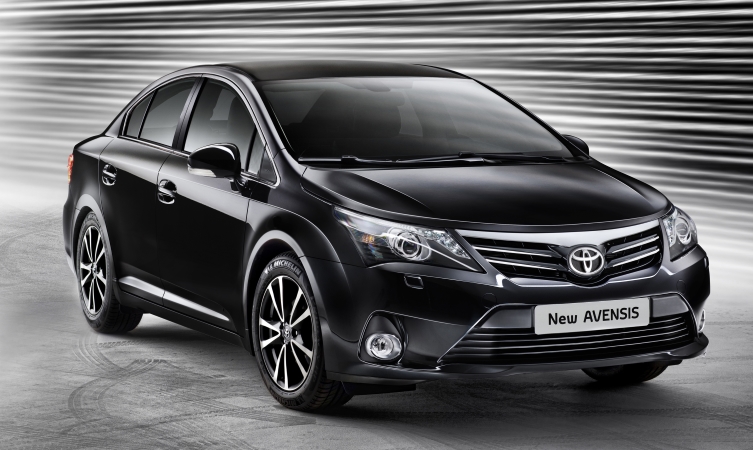


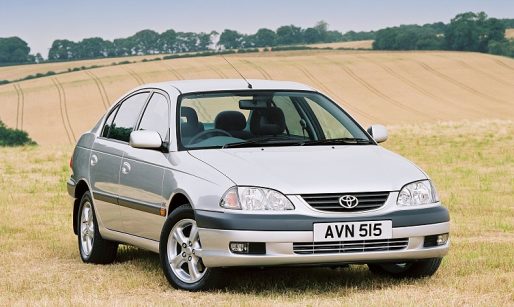
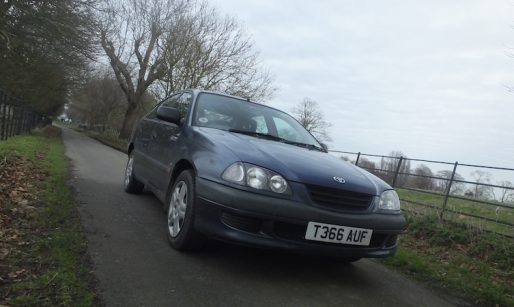
I am considering replacing my X Rover 45 TDI with the Avensis 20D-4D manual saloon.
Could anybody supply answers to the following:
1. Fuel consumption from diesel bought and mile travelled:
a) Winter town driving
b) Summer same
c) Motorway & ‘A’ road summer driving
d) Overall from new
2. Can you retract the wing mirrors manually on the standard fit.
3. How have you found the electric handbrake? Why complicate a simple effective device adding many things to go wrong in our wet climate. Can you do handbrake turns in the snow with it?
4. For self servicing, how is it? Filters and fluids replacement and have a good look round every 10,000 miles. Serviced the Rover for the last 10 years without any problems and still drives like a newborn.
5. What about all the other gizmos ( steering assist, stability control, traction control and brake assist),
Why do we need them now, if you drive correctly you will never need them (Other than Brussels and price padding). If they go wrong can you still drive the car?
6. What are ‘follow me home headlights’?
7. Do you pay Road Tax?
8. Can you run the A/C in manual mode?
Thank you in anticipation.
Hi David,
Our product team are having difficulty sourcing this information without knowing which specific vehicle you are asking about.
Would it be possible for you to let us know which year Avensis and grade you are after? Or alternatively, if you have a vehicle reg. of the car you wish to purchase or one of equal grade it would be extremely helpful. This information will enable us to accurately answer your questions.
We look forward to hearing form you.
In answer to your question, I am looking to purchase a new Avensis Icon Diesel with the 2.0D-4D 6 speed Manual Transmission.
I have already got the brochure with the EU consumption figures , but are looking for drivers that have figures from their own cars found by filling the tank and noting the mileage, not using the readout from the dash.
Perhaps you could also explain how the reading is produced. I am an engineer so can understand a technical explanation and the reason for my asking, rather than it come from the computer.
Because of the common rail system there is going to be some leakage of fuel back to the tank or the suction side of the fuel pump when the common rail pressure reaches a maximum due to the high pressures required to atomise the fuel. Perhaps a diagram would help the explanation and what it is that meters the fuel.
Has the Diesel Particulate filter taken the place of the Catalytic Converter or is it as well as? I notice the 2.21D-4D 150 has neither the DPF or CAT yet meets the EURO 5 standard for emissions. Apart from a longer stroke, 0.2lt extra capacity and fractionally lower CR there appears little difference in engines physically.
I have not bought one yet , still doing research, hence the questions.
Many thanks.
David
I.Eng AMIMar Eng.
Hi David,
Thanks for your post. Our technical team have advised the following:
The Fuel Consumption Display on all Toyota & Lexus vehicles is based on calculations derived from the Engine ECU and not a physical measurement of fuel flow, these figures are always an estimation only.
The fuel consumption calculation is derived from two known figures (Fuel Injector Opening Times & Fuel Pressure) with an addition compensation calculation (Fuel Temperature) to allow for fuel viscosity variances (similar calculations were put forward by Red Bull as a defence against exclusion from this year’s Australian GP).
The Toyota D4-D Engine uses a return type of system, the Fuel Injector Leak-Off and return from the Fuel Pressure Relief Valve is fed directly back to the Fuel Tank via a Fuel Heater, the Fuel Flow/Pressure is controlled by the SCV (Suction Control Valve) within the High Pressure Fuel Pump.
– The D4-D Euro V Engine is equipped with both a Particulate Filter and CCO (Catalytic Converter Oxygen),
– The 2.2 D4-D 150 FHV Engine is fitted with a DPNR (Diesel Particulate and NOX Reduction) which contains a DPF & NSR (NOX Storage Reduction Catalytic Converter) and a separate CCO.
– The 2.0 D4-D and 2.2 FTV Engine is equipped with conventional DPF along with two CCO’s
We do have some diagrams of which help illustrate these points, unfortunately we’re unable to post them here. If you would like us to directly email these across to you, please let us know.
Hope this helps.
Thank you for that explanation.
Yes, please send the diagrams.
Presumably the return fuel to the tank as it passes through the Fuel Heater acts to heat up the fuel going to the pump and cool the returning fuel to prevent the fuel overheating and associated problems with the HP pump.
Hi David,
The Recirculation Type Fuel Heater fitted to Avensis heats the Diesel Fuel in order to reduce the effect of cold weather fuel waxing. The Fuel Heater partially recycles this heated fuel back to the HP Pump when the engine is in a cold running condition. Once the Engine is in a fully warm condition the Fuel Heater sends all of the heated fuel back to the Fuel Tank, this is controlled by a Bimetallic Valve in the Fuel Heater housing.
We have sent further details including diagrams directly to your personal email address as requested.
Hope this helps.
Park assist ?? Did you pass your test or what?? If you need that option you should not be driving. It is all about being competent to operate a car in all situations and weathers. You have a licence that say you can, or are driving tests so simple now that they pass anybody to make the figures look good.
There are such things as technology assisted accidents, equipment designed to prevent an accident causing drivers to take higher risks relying on gizmos to prevent an accident rather than common sense and driving skill telling you not to.
When ABS came out there was an increase in shunts in the USA by drivers following too close to the car in front. Two to three car lengths per 10 mile an hour in good conditions should be followed, not 6′ at 70 mph.
Driver assist. If you are that sleepy or drunk you should not be driving.
Blue Tooth Phones. Turn your phone off when driving and put it in the boot. No call is worth an accident and no call is important even from your boss. You won’t get the backing from you boss if you have an accident and it is your licence , not his.
Is there an engine oil issue with the 1.8 vvti engines from 2006 models as I am ready to buy one in a day or two, there has been some mentions on car forums
Thank you for your post.
We’ve spoken with our technical department and they’re not aware of any oil issues. However, if you would like to follow this up further, we recommend getting in touch with our Customer Relations team who can be contacted using this link: http://po.st/O3vN72
Hope this helps.
How long from an order at a dealer for an Avensis does it take for the car to be made and delivered?
Are they made to order or stock?
If to stock , how many Avensis Icon Diesel with the 2.0D-4D are there stockpiled in England, as it seems all the manufacturers have 1000’s of cars unsold rotting away on old airfields or at coastal sites being coated with salt spray carried by the winds.
Honda at Swindon, Nissan at Sunderland etc.
Hi David,
Thanks for the post.
As Avensis is built here in the UK at our factory in Derbyshire, we’d say that an order would normally take about five weeks as a guide. However, order time can be a lot quicker if there is an appropriate car in stock within our network, or longer if you’re looking for an uncommon combination of powertrain, specification, accessories and so on. It doesn’t sound like that would be the case with an Icon 2.0D-4D though. We would recommend speaking directly with your local Toyota dealer as they’re best to advise on this.
Many thanks
Got to say this is the only time I have ever seen a manufacturers website admin actually research and post a decent answer from a knowledgable person rather than just repeat the usual marketing spiel. Well done Toyota uk.
Thanks for your feedback John, it is appreciated.
Hi
I have recently purchased an 63 reg Avensis Icon Tourer, none of the side windows rubber strips wipe moisture from the windows when wound down.
My concern is that any moisture on the window will run from the window into the door interior not being wiped off to stay outside.
Hi Mike. Thanks for your question. The weather strips that go along the width of the window are not designed to wipe moisture off the glass. The curvature of the window means it would be impossible for this to happen. They are in fact weather mouldings not scraper mouldings. They are designed to keep excess water out of the door when the window is shut. Drops of moisture that go past the mouldings are drained out through the vents in the bottom of the door. We’re awaiting answer on your previous question and will get back to you as soon as we receive it.
Hi I would like to praise you on the 21years that I haves driving my carina e diesel never let me down . It still as original running gear and all electrics . Thanks again Mr b Harkins
Hi Brian
Thanks for your post.
Good to hear about your experience of ownership with your Toyota Carina E and that it is still taking you places today. Feel free to post a picture on our Toyota UK Facebook page.
I have a 2013 icon tourer 2.0 d4d but it is only doing 45-47 mpg yet you are saying it should be doing up to 62 mpg could you tell me if there is a problem
Hi Laurence,
Thank you for your post. Fuel consumption figures are hard to predict and vary due to different driving styles such as, urban to rural driving. More information about how the government calculates fuel consumption figures can be found here; https://mag.toyota.co.uk/how-official-fuel-economy-figures-are-calculated. Hope this helps clarify and if you have any other questions please let us know.